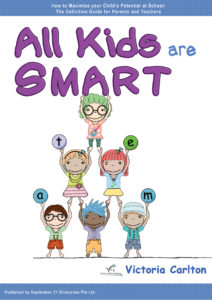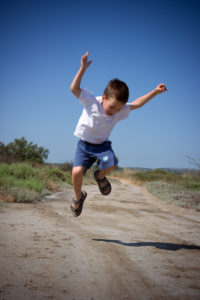If we want children to engage and reach their learning potential, they have to ENGAGE and LOVE the process.
That does not mean that learning does not get hard. In fact, children can really enjoy the bumpy parts if they feel supported and believe they CAN solve problems. This means that we have to use child-friendly themes and ensure we differentiate the learning. It can never be one size fits all!
This also means teachers need to research their children’s interests and to tweak the programs so ALL children can experience success.
It might mean asking for slightly less written responses or cutting back on homework requirements.
For very able students more complex reading material can be chosen. Luckily, with the huge amount of material available on websites devoted to children’s interests and text and work books readily accessible, this is not hard.
It is essential that parents understand their children are all amazing gifts and definitely do not all respond to the same teaching styles.
Some children need to move more as they learn and often respond well to visual stimuli. Others can easily concentrate and take in information in auditory ways.
We regularly conduct assessments for children to determine learning styles and both strong and weak intelligences. This allows us to offer more targeted tuition that will really meet students’ needs.
Parents and teachers who would also like to assess children’s predominant learning styles and strengthen weak intelligences can order a copy of ALL KIDS ARE SMART from us. (Order by emailing victoriacarlton@iinet.net.au) This book will provide testing tools and give you a HUGE amount of information for maximising children’s progress.
Try to keep your tension away from learning situations. We know students learn more when relaxed and are therefore open to new information and experiences.
We can ALL love learning as long as we perceive it as possible!
Plan plenty of learning games and “hands-on”, active learning experiences. You will be rewarded by happier, more motivated students who feel EMPOWERED and LOVE their learning experiences!
The A-Z of Child Whispering: J is for JIGGLE

Children are natural jigglers and wrigglers. They don’t stay still for a good reason. I am sure I am not the only teacher who has stared at her class and drawn a sharp comparison with a basket of wriggling worms! 
They learn by moving, touching, pushing, pulling, moulding, grabbing ……. just watch a group of pre-schoolers at play!
This does not magically stop when they reach a certain age.
Sure their concentration span lengthens but even 10/11 year old need to move.
We are kidding ourselves if we think passive children sitting in desks doing worksheet after worksheet are really learning.
Learning can be interactive, challenging, messy, satisfying, frustrating, joyful ……… all within one lesson! Of course there is a place for worksheets. A well designed worksheet can help children to revise and deepen understanding. But- worksheets will never take the place of a good teacher who can adapt the learning environment very skilfully and often quite quickly to improve learning outcomes.
If we force children to sit quietly for longer than comfortable they will often put all their energy into trying to do just that. For a child that is a bit like us wanting to visit the bathroom BADLY after the seat-belt sign is switched on for landing!
Wise Child Whispering teachers and parents understand this and ensure youngsters have plenty of opportunity to JIGGLE, JUMP, RUN, MOVE – children learn by moving!
Here are some really effective ways to include movement activities in classrooms. We use these regularly as part of Victoria Carlton Programs
- Start each day with some movement education- either some Brain Gym or maybe the fantastic Harry Potter Yoga! If you do this you are stimulating their brains and helping some of them deflect some excess energy. https://youtu.be/R-BS87NTV5I2.
- Allow your VERY jiggly children a stress ball or similar so they can squeeze and concentrate.
- Don’t ask children to concentrate for more than 15 minutes without a stretch, quick exercise, change of activity etc.
- Ensure you have plenty of learning strategies drawn from the physical intelligence area of MI so that children can learn while moving!
- Try human sums! Children can act like human counters for various operations.
- When children sound out words let them jump up and down or bounce a ball at the same time!
- Practise word recognition and sentence structure by standing in a line and holding up words and punctuation marks.
- Jolly Phonics and Jolly Grammar are incredibly effective ways for children to learn literacy skills and I am convinced that a large part of their effectiveness is due to the huge movement and activity component of the program. Ask us about training opportunities for these courses.
- Allow plenty of time for art and craft as it calms children and the amount of learning increases.
- (See my FAST ART AND CRAFT ACTIVITIES for ideas https://www.pinterest.com/victoriacarlton/fast-artcraft-activities/
- Change the learning environment and displays often so children feel stimulated and enjoy exploring the environment.
- Don’t always teach from the front- occasionally teach from the back of the class, have them out of chairs close to you (even big kids!), go into another learning area or even outside. To wake up children’s brains we can’t be TOO predictable!
- Choose NOT to notice every wiggle and jiggle. Constantly stopping our teaching for very small lapses of concentration is incredibly annoying to other children and they start to lose the thread of your lesson!
- Consider teaching some strategies to let some of the excess physical energy out! (Sort of like opening the steam vents on a cooking pan!)
I teach my chronic wrigglers to curl their toes or fingers and then let them go. This gives a slight movement outlet. They can also tap quietly with feet. - Make daily MINDFULNESS time an integral part of your program. Children sit for a minute in silence, letting go of any worries and just emptying their minds. The quality of the learning after the mindfulness minute is easily observable!
- Consider using our visualisations programs: Mind Journeys. We have over 50 of these ready for teachers and parents and provide examples on social media and the whole lot are available in our forthcoming MIND JOURNEYS BOOK. (You can pre-order this now) We have found that using this method to teach creative writing and thinking, has had HUGE benefits for children who normally cannot sit still for more than 5 minutes.
If you would like to know more about your own “jiggling worms,” their cocktails of intelligences and how to increase them, order our ALL KIDS ARE SMART book by emailing victoriacarlton@iinet.net.au or if you are in SE Asia order through www.september21.com.sg
Children are MEANT to jiggle and move so let’s go WITH it in our learning programs rather than putting all our energy into trying to change something that is not actually meant to change! ACTIVE learning and ACTIVE teaching strategies work!
The ABC of Child Whispering: I is for IMPORTANT

As developing child whisperers we need to keep IMPORTANT in front of us at all times. That means thinking deeply about life and children.
It means letting children be who they are meant to be. It means honouring their cocktail of intelligences.
ALL KIDS ARE SMART can show you ways to assess your child’s intelligences and build on each one.
You can of course also assess and build your own intelligences as well with this book!
Of course we want the best for our children but that does not always mean academic success.
The values such as kindness, self-discipline, perseverance and loyalty are the most important things we teach as well as spiritual, emotional and social learning.
Listening to children and making time to be with them, are essential as we help them to grow.
Encouraging children to be kind and loving people are essential components of real learning. These values cannot be learned at speed and children gradually learn these through interactions with you and their close and extended family and community groups and through their play, books, media and faiths. Build a meaningful, positive and life enhancing home environment for your children and choose a schooling system that will build their EQ as well as their IQ!
You are a model- ultimately what you DO rather than what you say will have the greatest impact on your children.
Give up your preconceived notions of who they should be. (And who YOU want them to be!)
Rather ask- who are they?
Let them unfold and discover their own destiny and don’t stand in their way!

